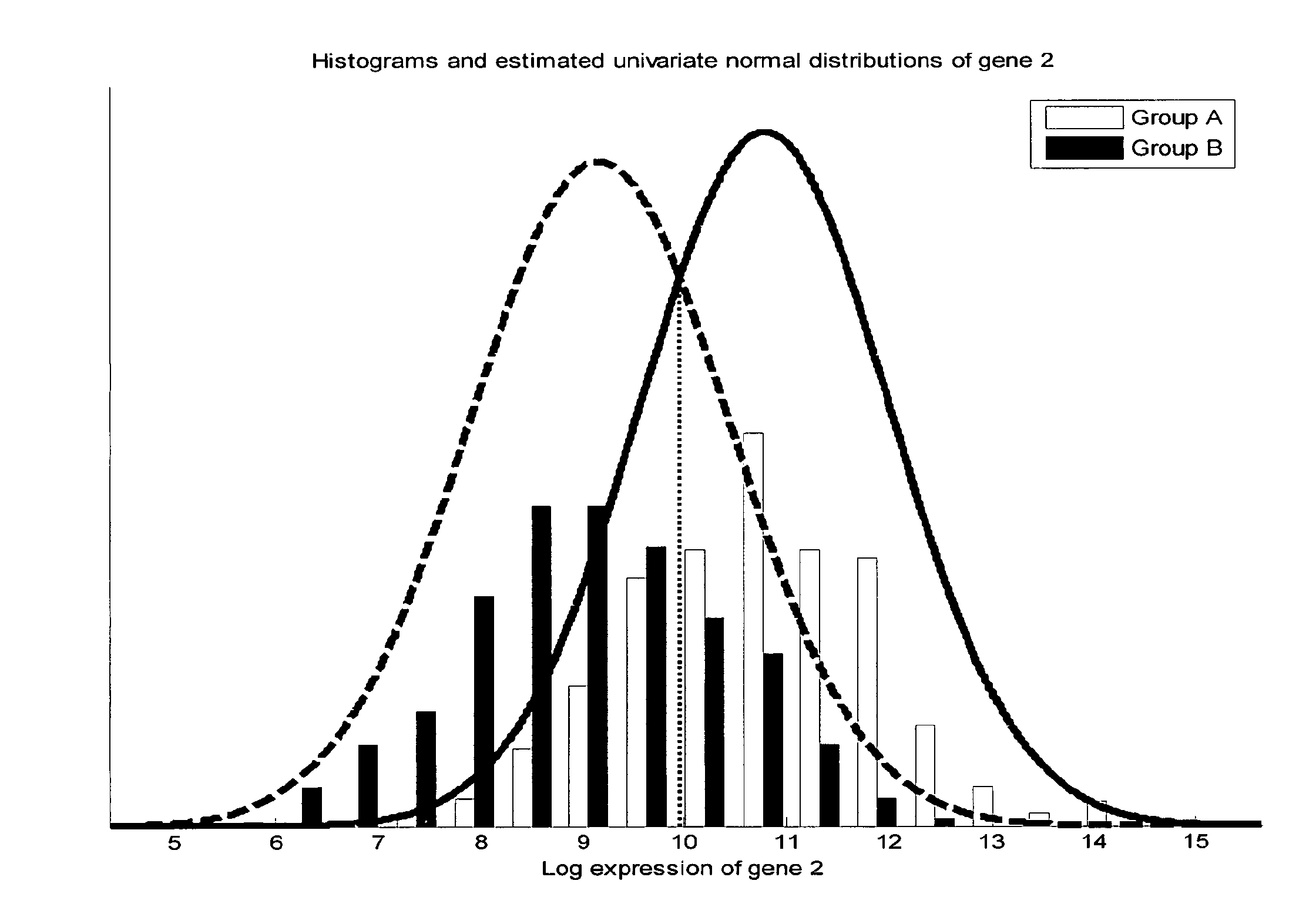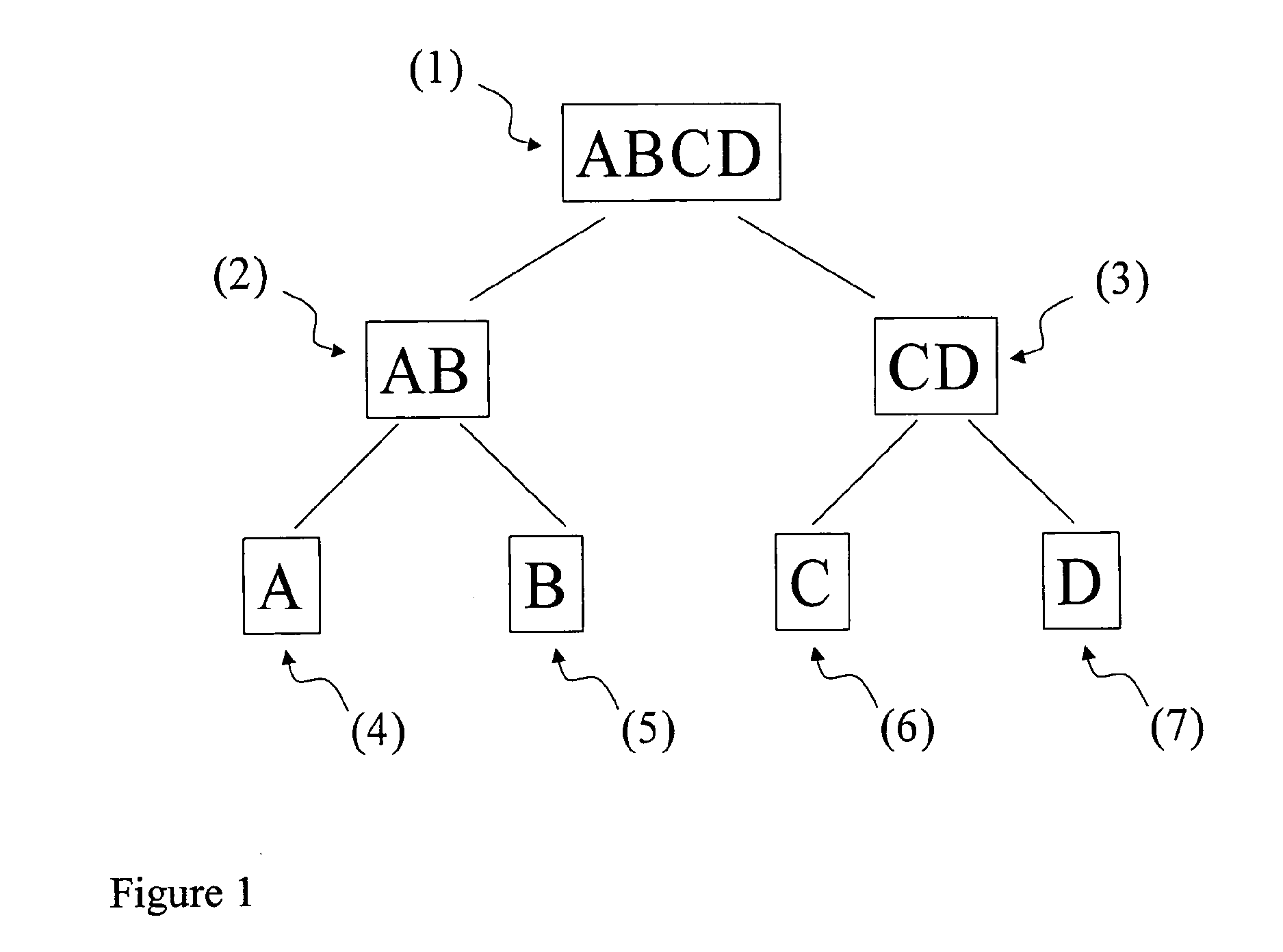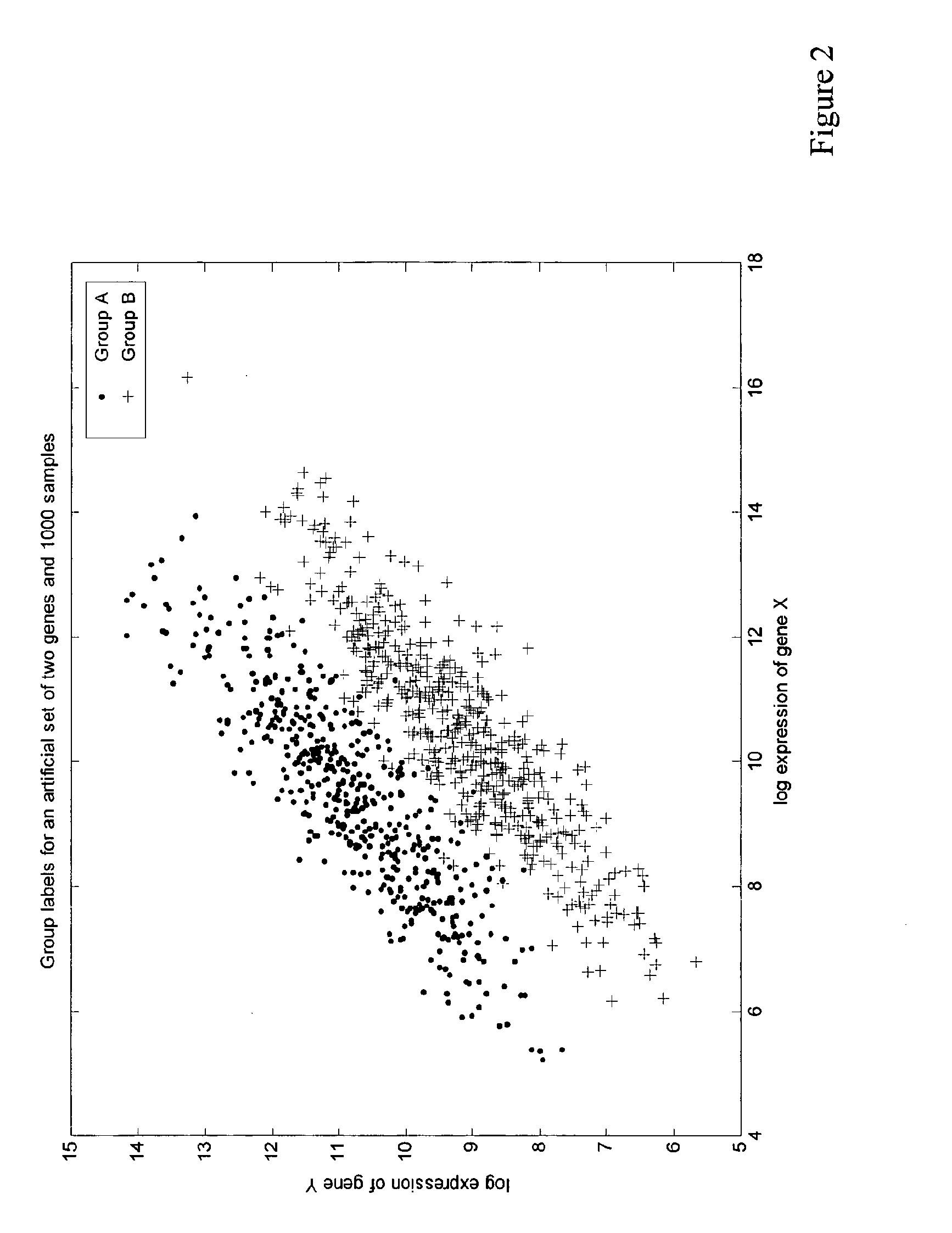Prediction of Breast Cancer Response to Chemotherapy
a breast cancer and chemotherapy technology, applied in the field of breast cancer response prediction, can solve the problems of not disclosing the marker genes or methods for the response prediction of epirubicin/cyclophosphamide (ec) based chemotherapy, severe impairing the quality of life of patients, and not disclosing the marker genes or methods for the response prediction of ec-based neoadjuvant chemotherapy, etc., and achieves high correlation
- Summary
- Abstract
- Description
- Claims
- Application Information
AI Technical Summary
Benefits of technology
Problems solved by technology
Method used
Image
Examples
example 1
Patient Selection, RNA Isolation from Tumour Tissue Biopsies and Gene Expression Measurement Utilizing HG-U133A Arrays of Affymetrix
[0121]Samples of primary breast carcinomas were available from 80 patients subjected to neoadjuvant treatment with epirubicin / cyclophosphamide (EC). EC consisted of epirubicin 90 mg m2 per day 1 in a short i.v. infusion, and cyclophosphamide 600 mg m2 per day 1 in a short i.v. infusion. Four cycles of EC were administrated 14 days apart. All tumour samples were collected as needle biopsies of primary tumours prior to any treatment. The biopsies were obtained under local anaesthesia using Bard® MAGNUM™ Biopsy Instrument (C.R. Bard, Inc., Covington, US) with Bard® Magnum biopsy needles (BIP GmbH, Tuerkenfeld, Germany) following ultrasound guidance.
[0122]Total RNA was isolated from snap frozen breast tumour tissue biopsies. The tissue was crushed in liquid nitrogen, RLT-Buffer (QIAGEN, Hilden, Germany) was added and the homogenate spun through a QIAshredde...
example 2
Classification of Breast Tumour Tissues into EC Response Classes
[0124]For the separation of the aggregate breast cancer response classes AB and CD from ABCD (cf. FIG. 1) one of the following partial classifiers is used:[0125]1. A univariate classification based on a single gene expression is provided by measuring the expression level of MLPH (Affymetrix Probe Set ID 218211_s_at) and comparing it with a threshold value of 1733. Samples with a higher expression of MLPH compared to the threshold value are aggregate breast cancer response class AB, whereas such with a lower expression are aggregate breast cancer response class CD.[0126]2. Alternatively, the expression level of SPDEF (Affymetrix Probe Set ID 213441_x_at) is compared with a threshold of 1091, SPDEF (214404_x_at) with a threshold of 626, SPDEF (220192_x_at) with a threshold of 867, or AKR7A3 (216381_x_at) with a threshold of 402. In each of these cases, samples with an expression higher than the corresponding threshold are...
example 3
Significance of Correlated Marker Genes (A Theoretical Example)
[0145]It is well known that expression level data of multiple genes can be highly redundant information, due to co-regulation of certain genes or groups of genes in living organisms.
[0146]According to the invention, the so-called “correlation coefficient” is used as a measure for the degree of similarity of expression levels in multiple samples. If we denote the log expression value of the i-th gene (i=1, 2, 3, . . . N) of patient j (j=1, 2, 3, . . . M) by gi,j, the correlation coefficient r may be defined as
ri1,i2:=∑j=1M(gi1,j-g_i1)·(gi2,j-g_i2)(∑j=1M(gi1,j-g_i1)2)·(∑j=1M(gi2,j-g_i2)2)
where the mean value of gene i is given by
g_i:=1M∑j=1Mgi,j.
[0147]r is also called “Pearson Correlation Coefficient” and is widely used in the statistical community.
[0148]While r may take any value between (and including) −1 and 1, correlations with an absolute value close to 1 indicate a linear relationship between the genes under consider...
PUM
| Property | Measurement | Unit |
|---|---|---|
| Time | aaaaa | aaaaa |
| Mass | aaaaa | aaaaa |
| Fraction | aaaaa | aaaaa |
Abstract
Description
Claims
Application Information
 Login to View More
Login to View More - R&D Engineer
- R&D Manager
- IP Professional
- Industry Leading Data Capabilities
- Powerful AI technology
- Patent DNA Extraction
Browse by: Latest US Patents, China's latest patents, Technical Efficacy Thesaurus, Application Domain, Technology Topic, Popular Technical Reports.
© 2024 PatSnap. All rights reserved.Legal|Privacy policy|Modern Slavery Act Transparency Statement|Sitemap|About US| Contact US: help@patsnap.com










